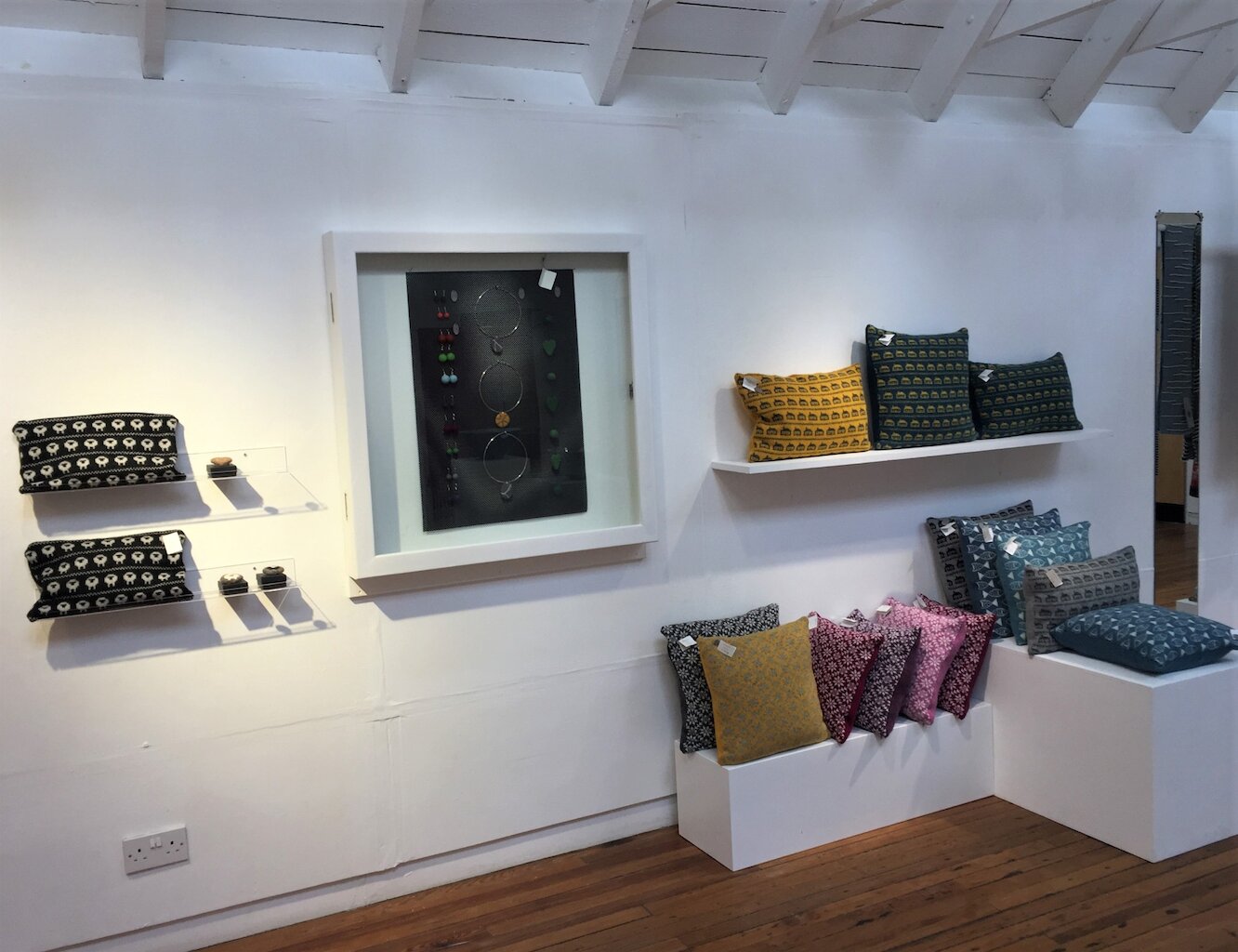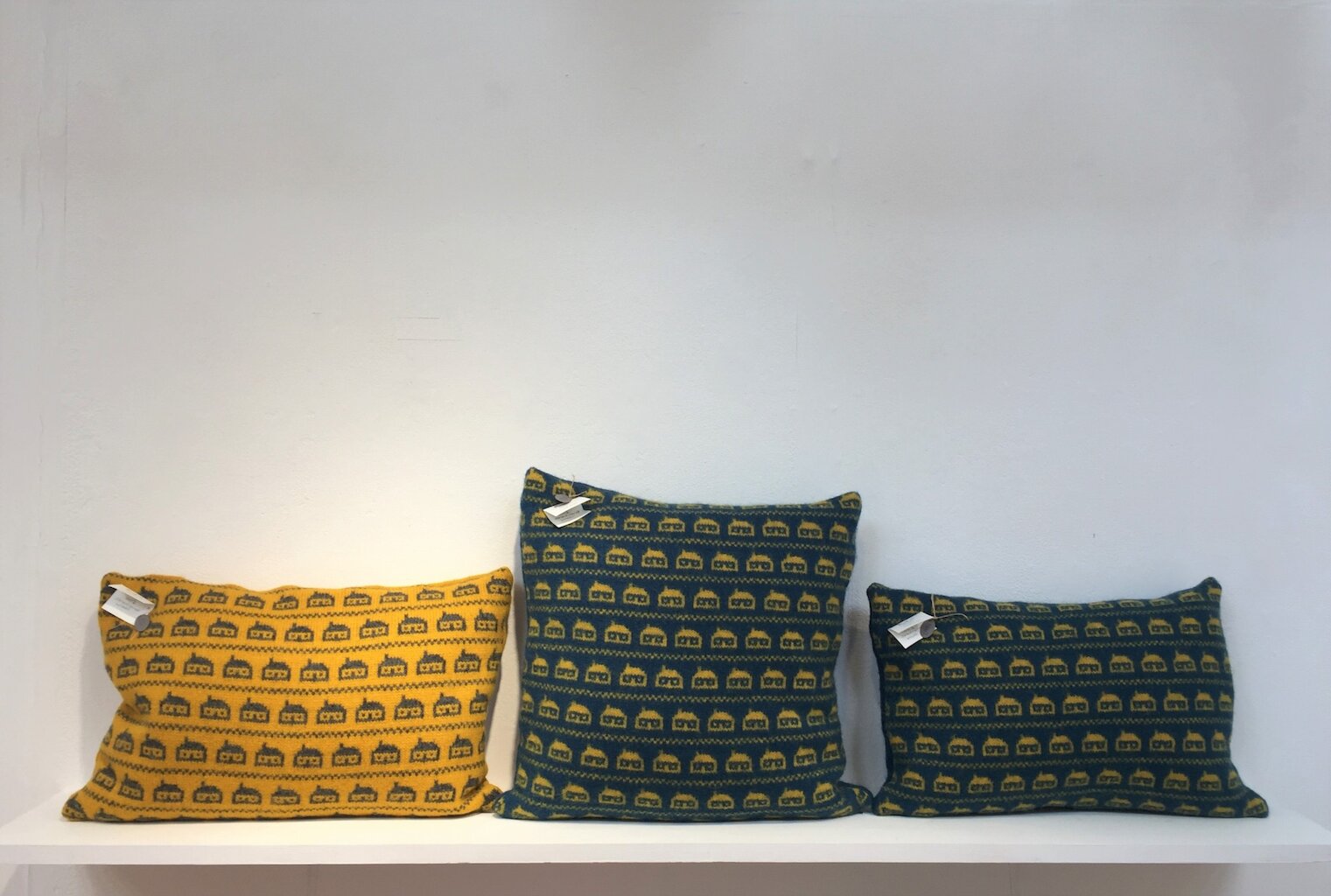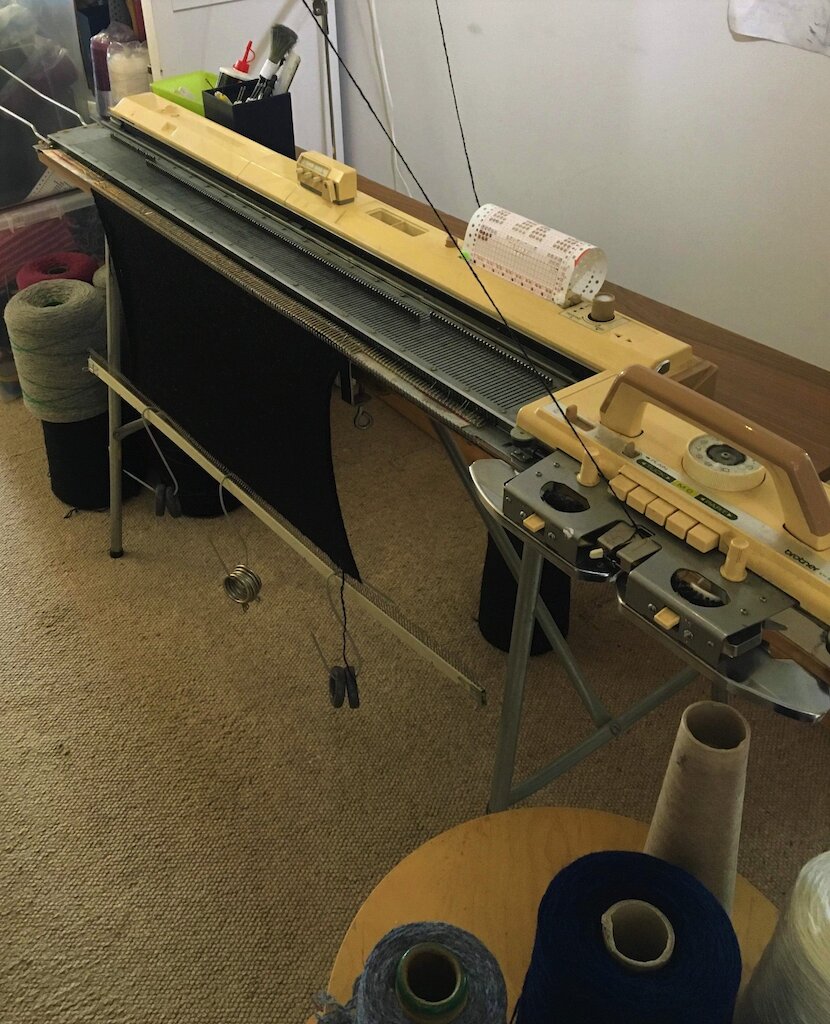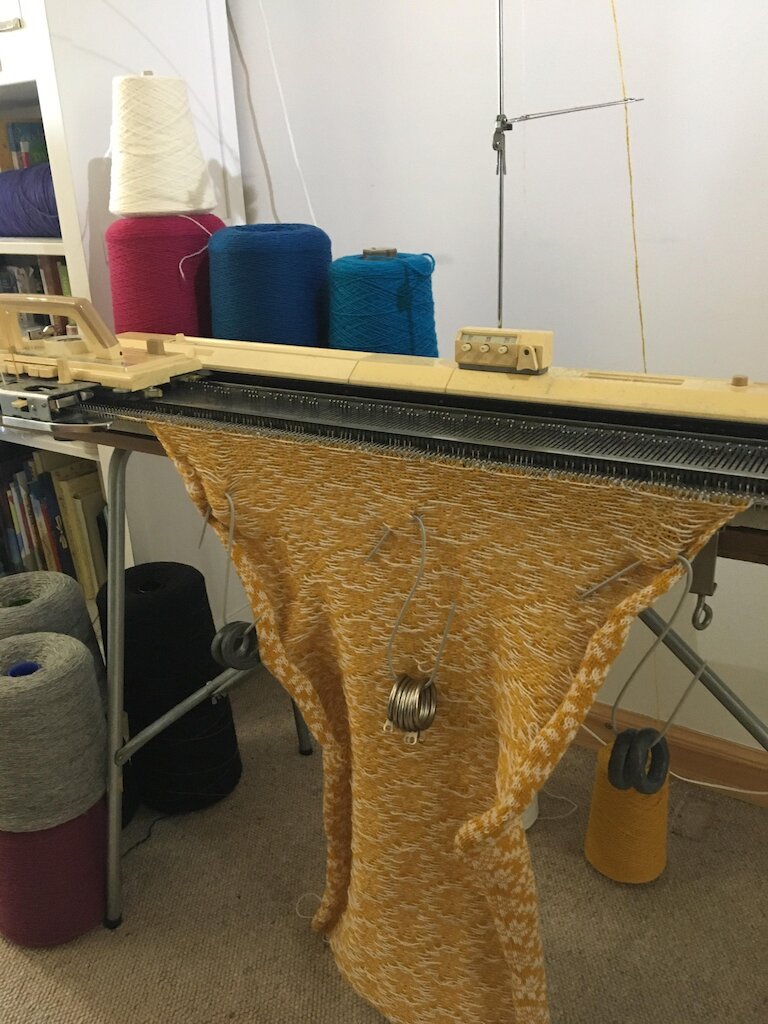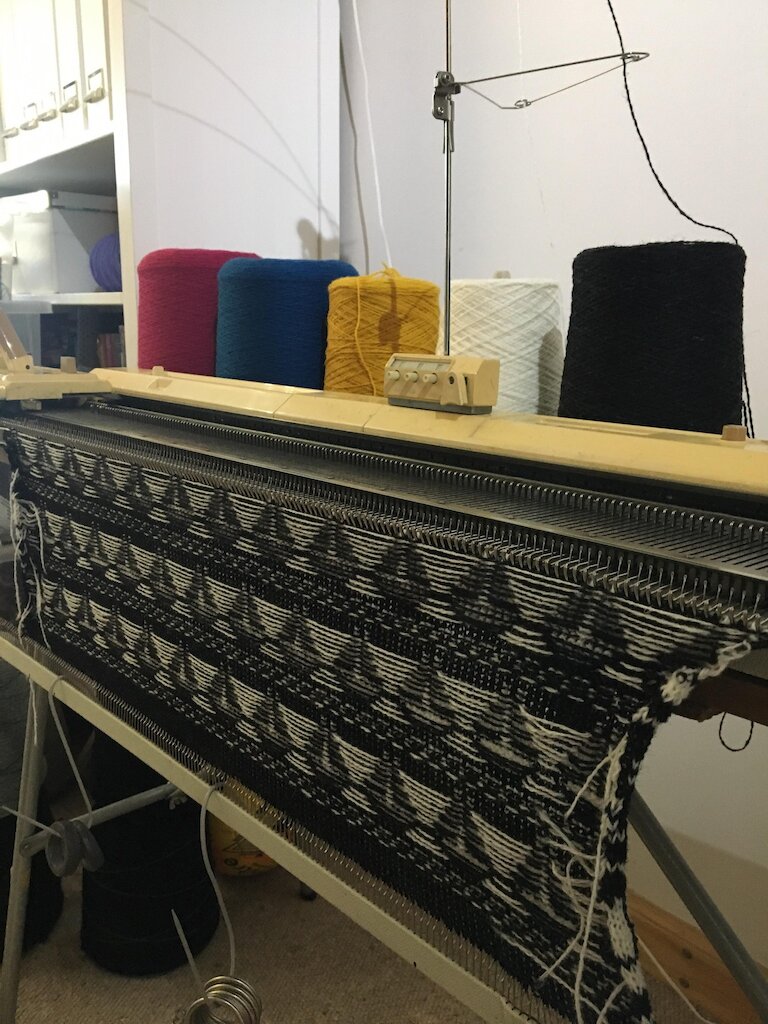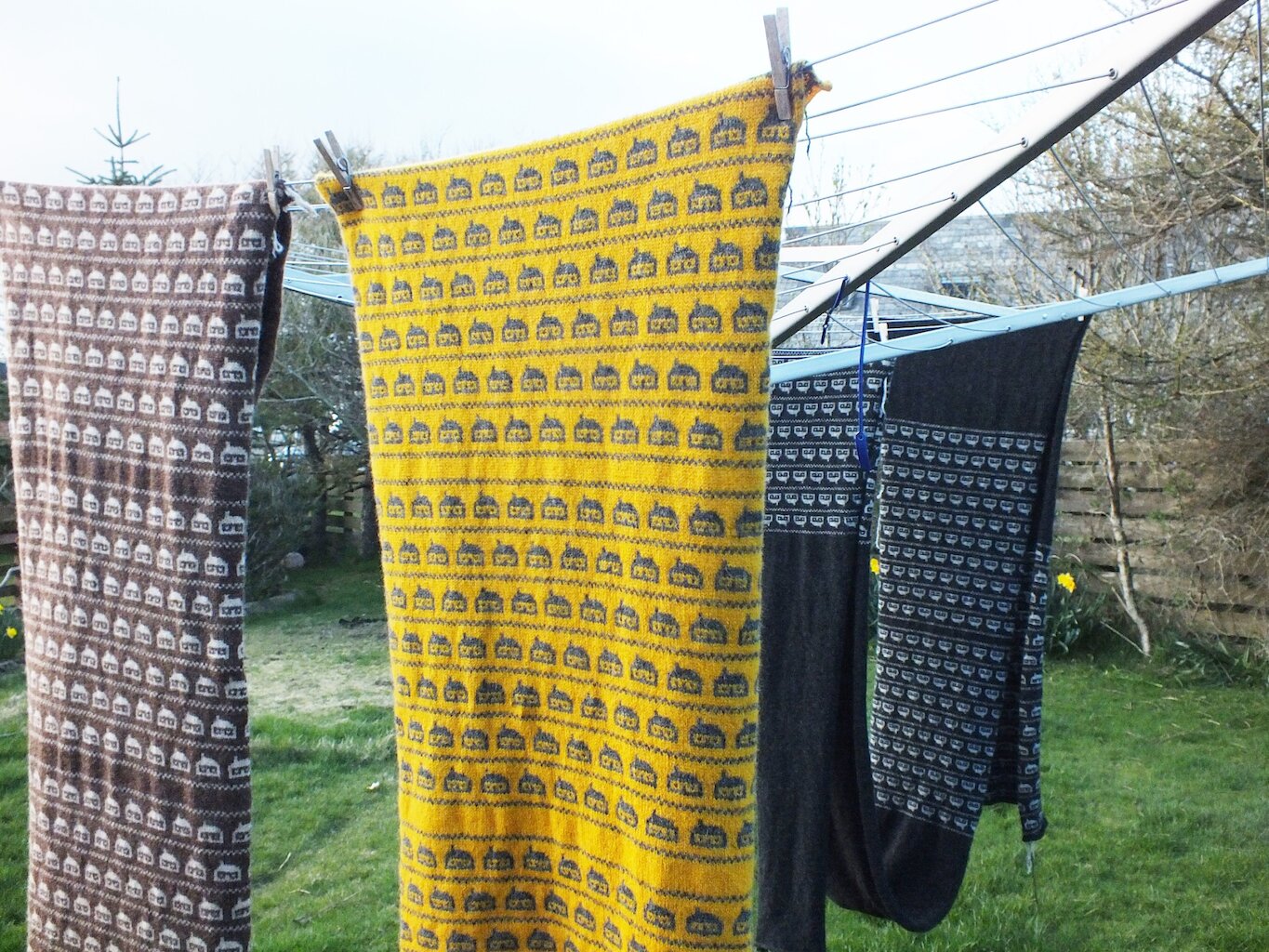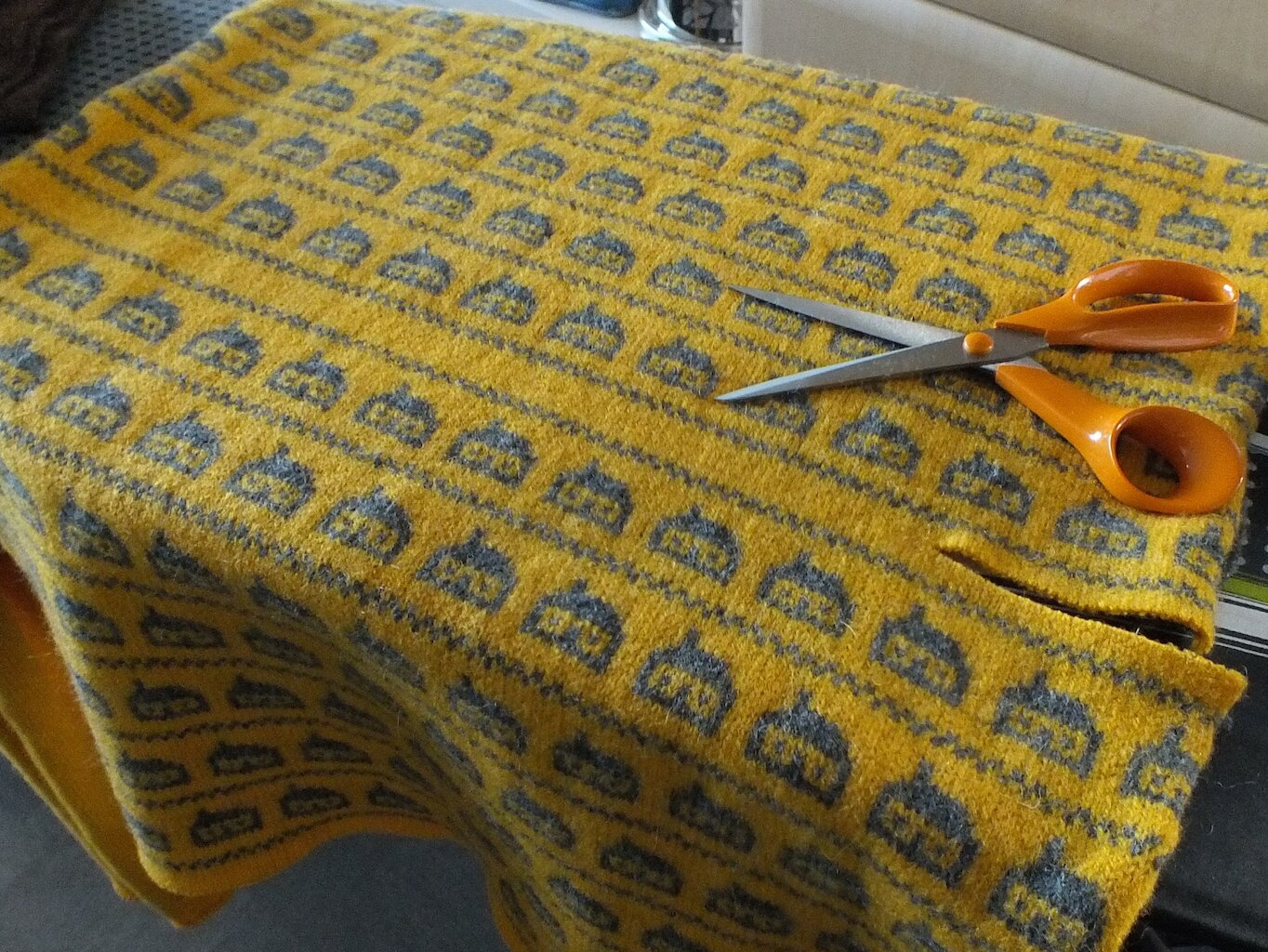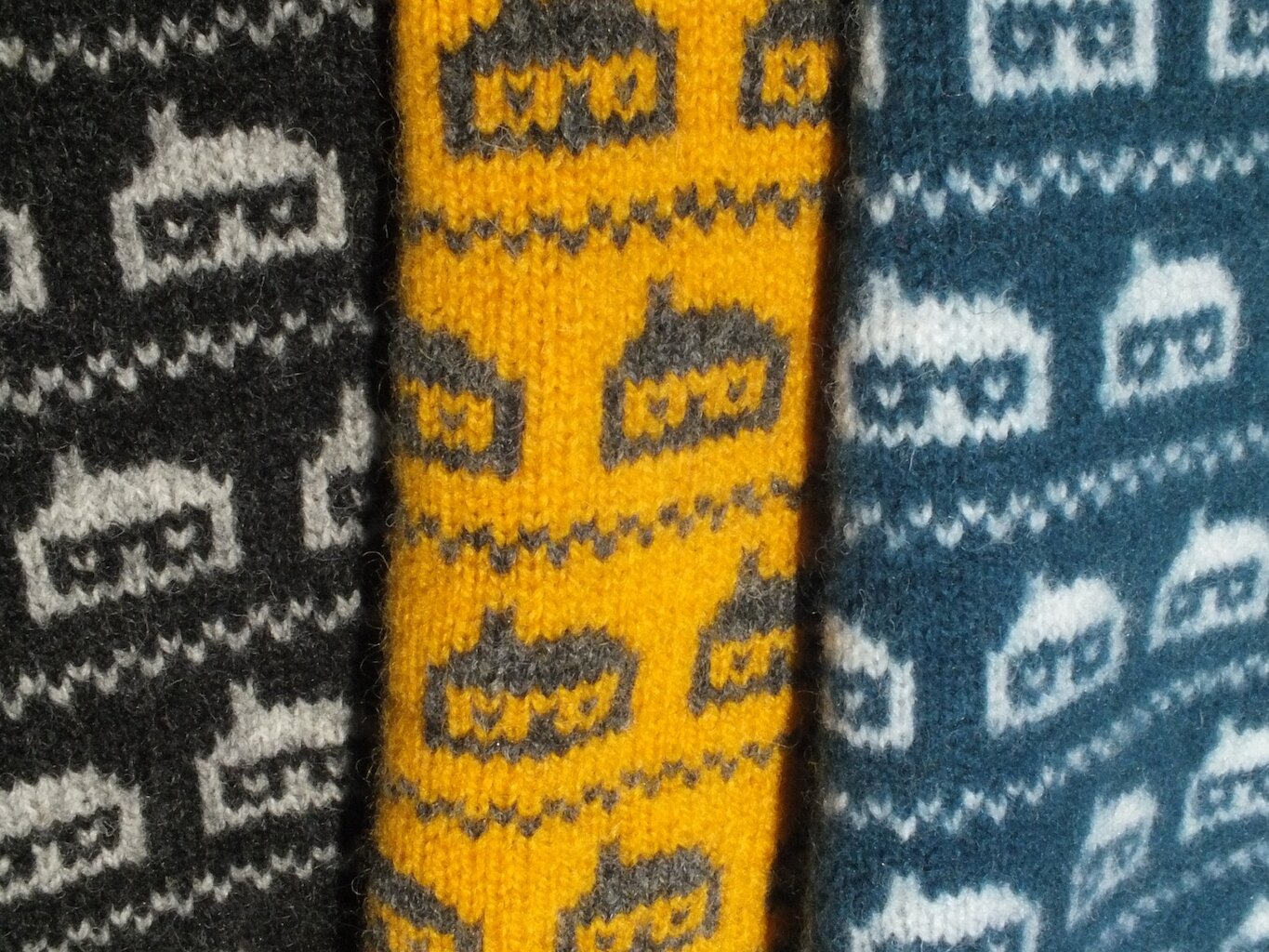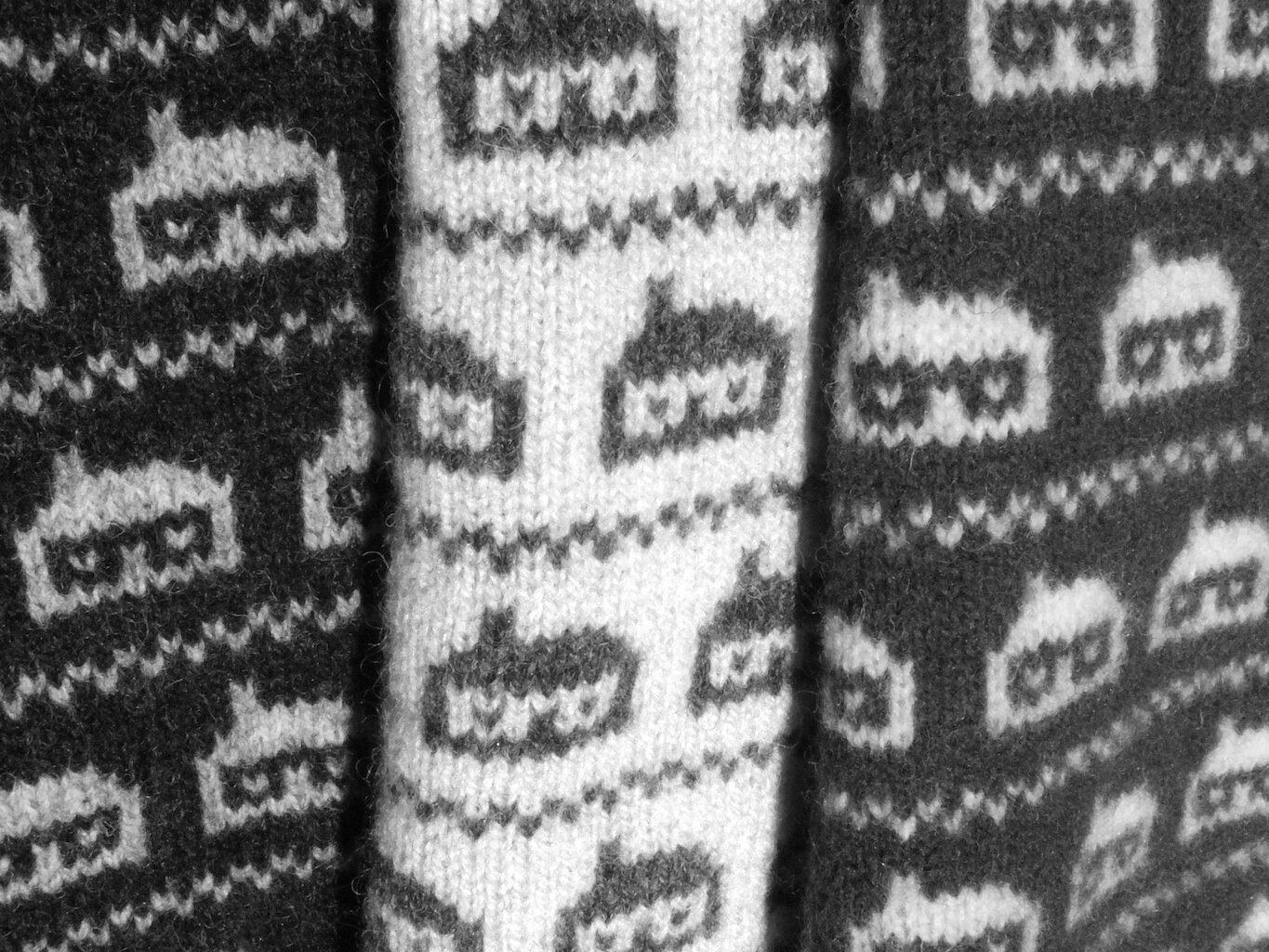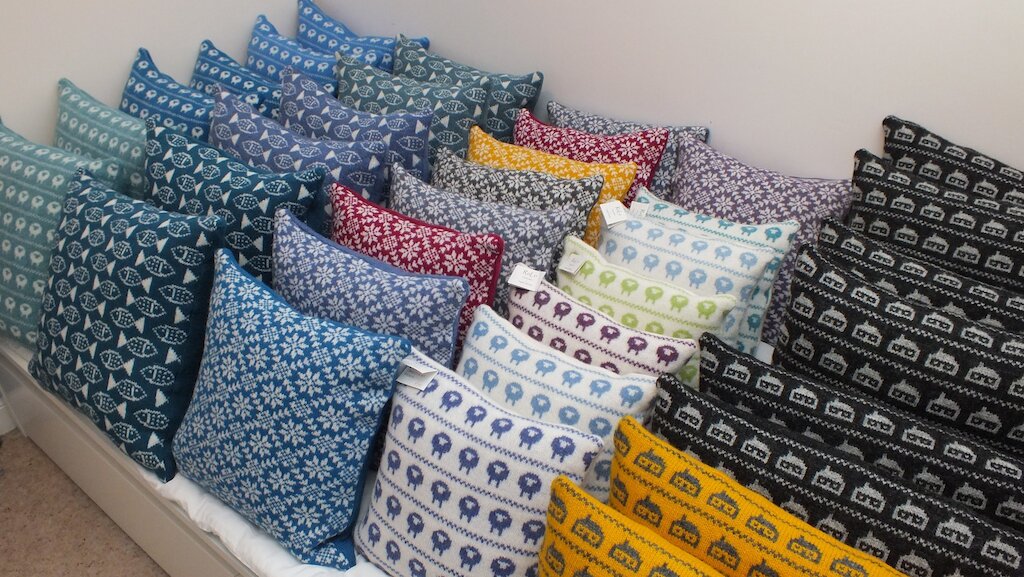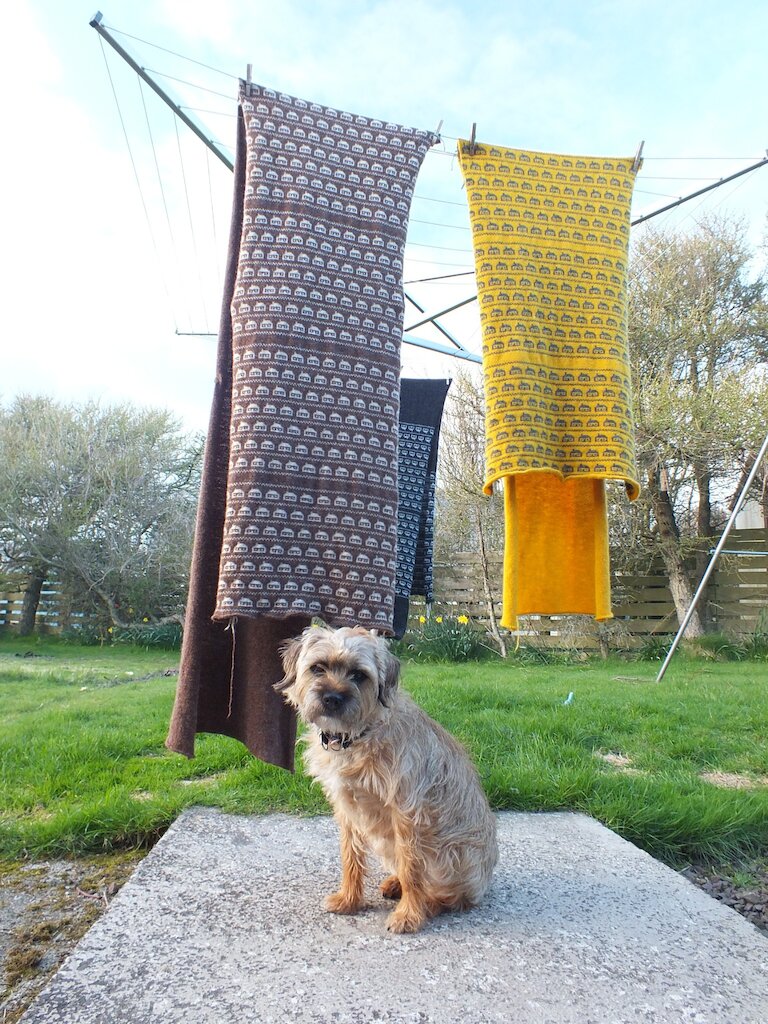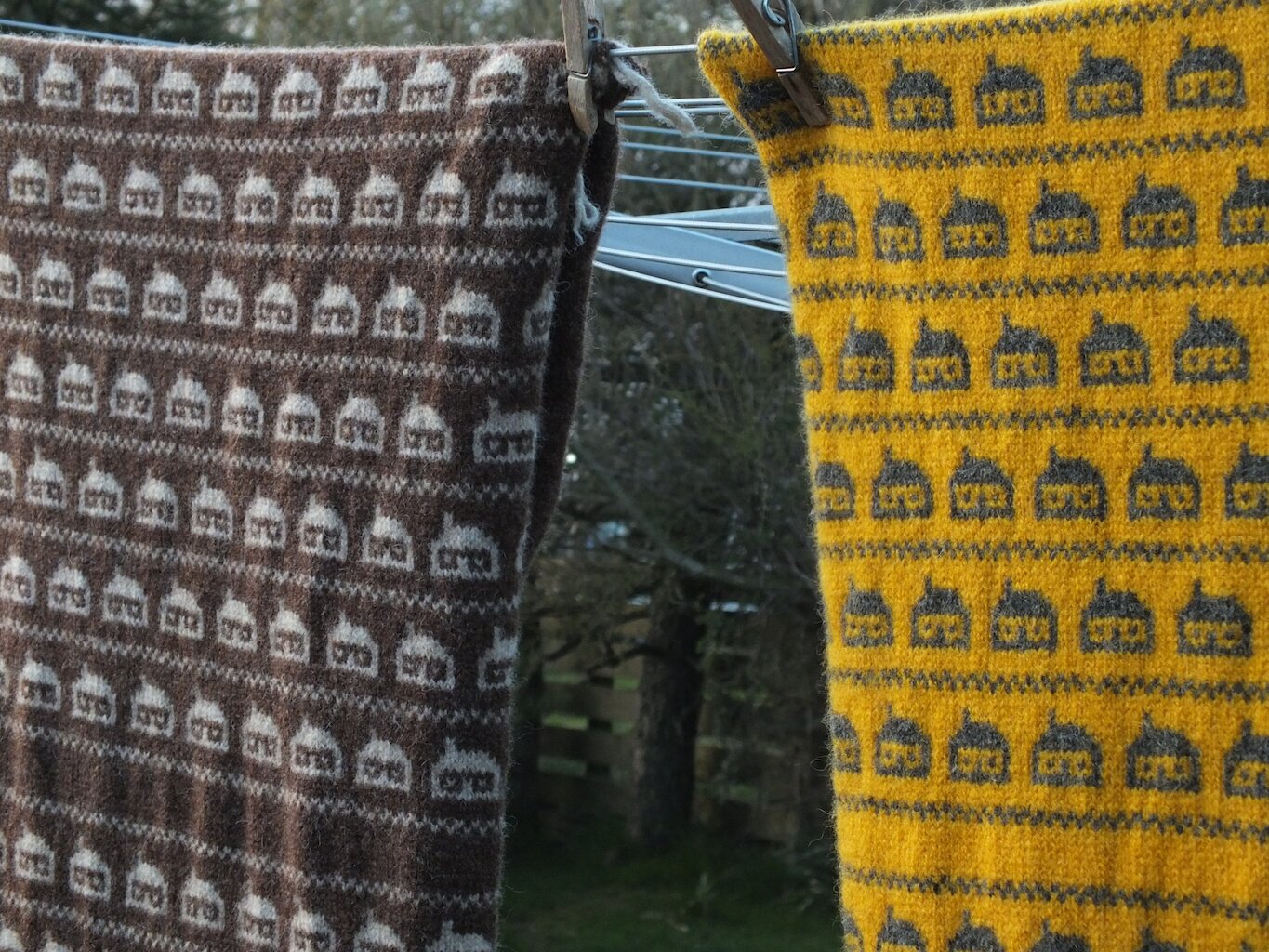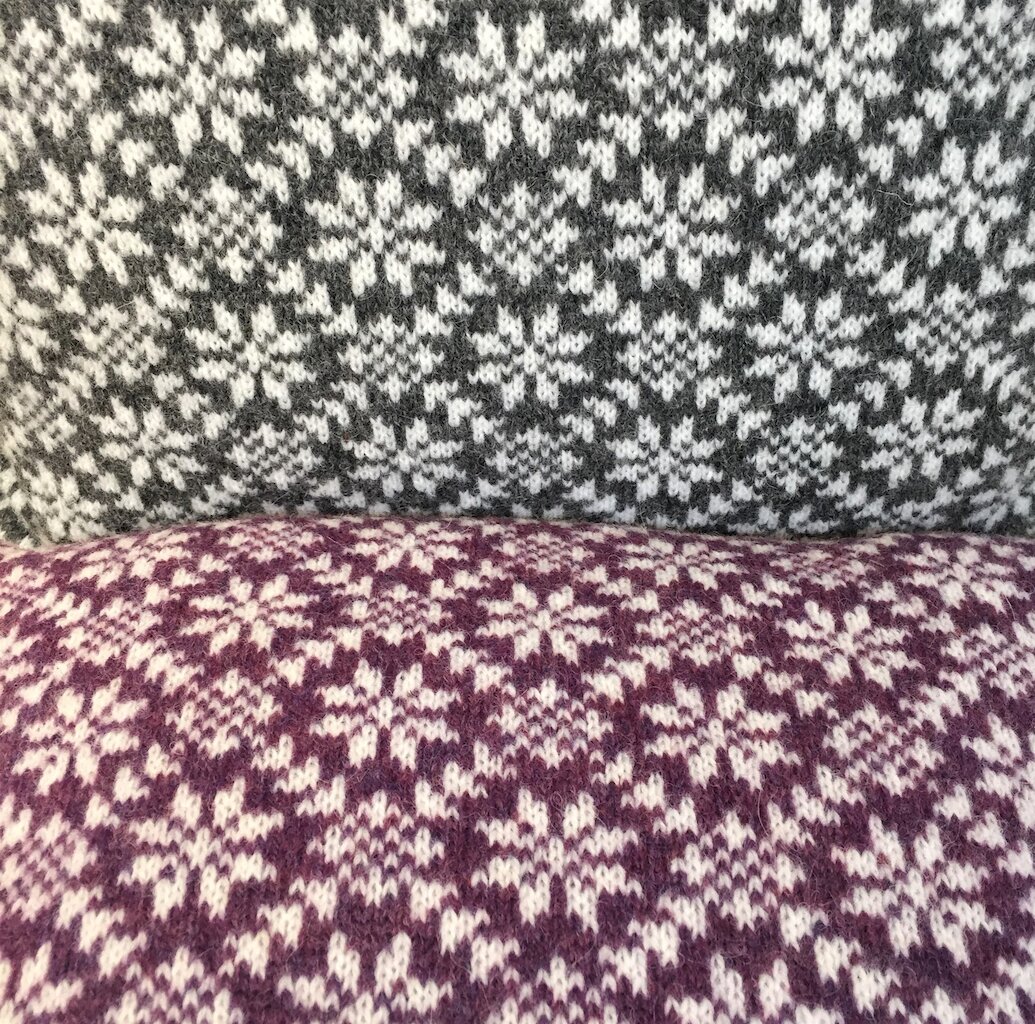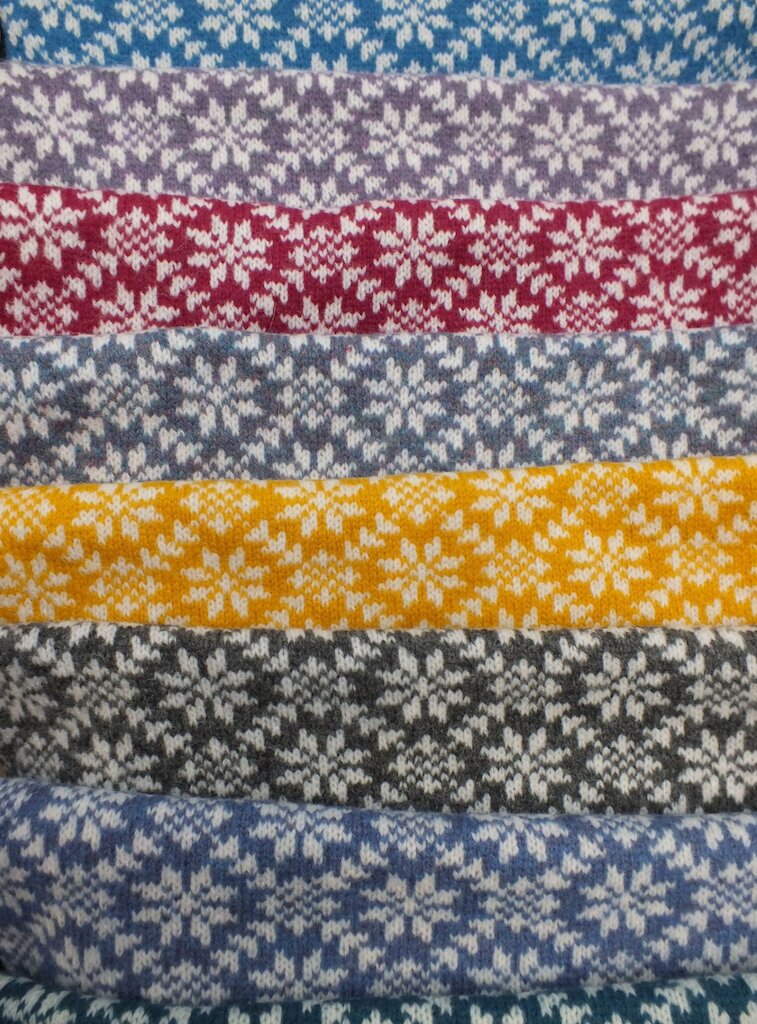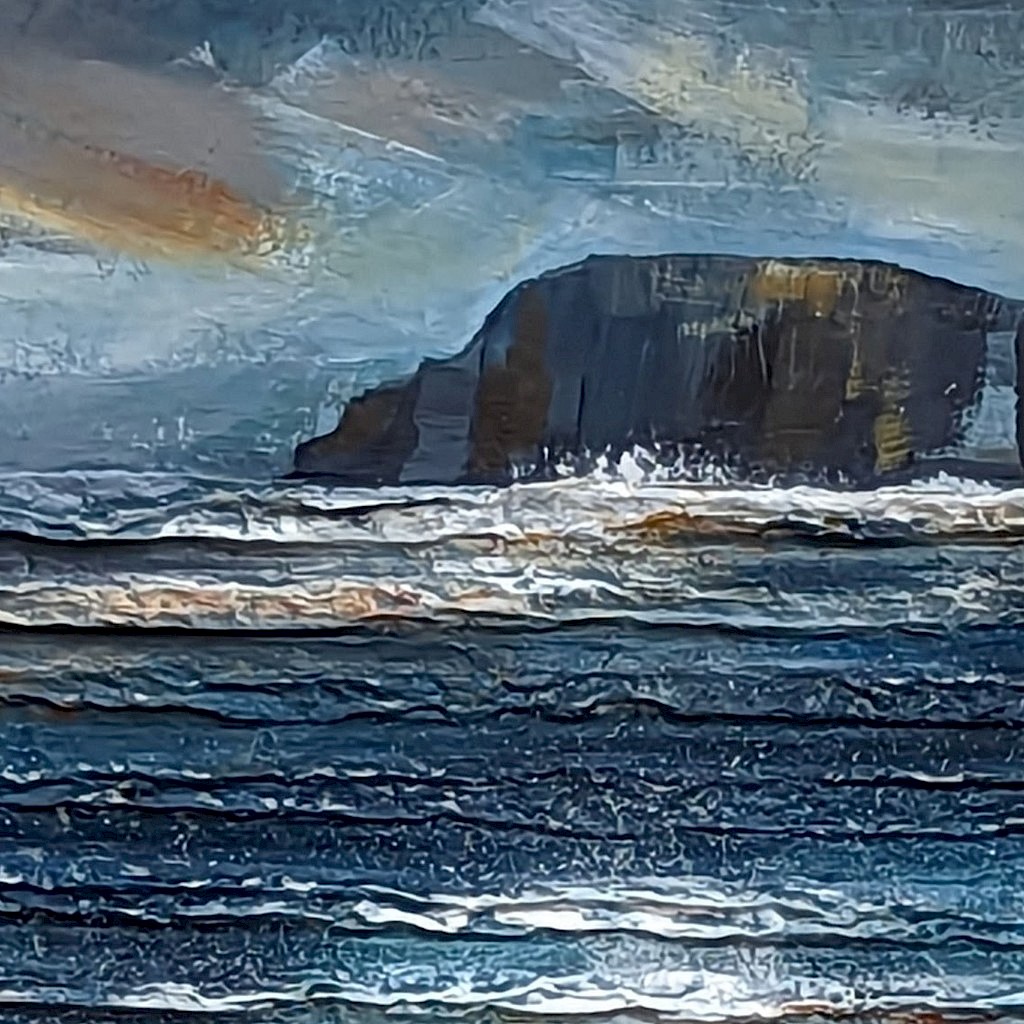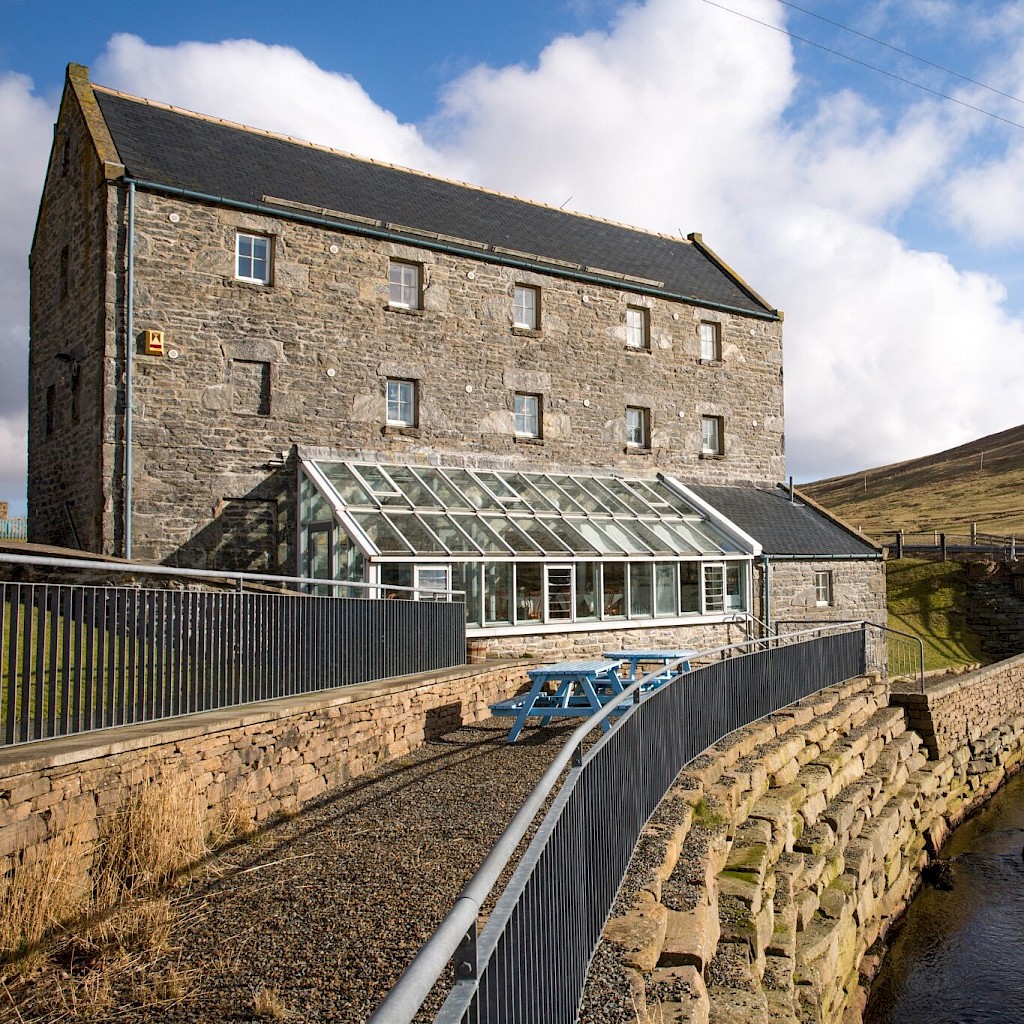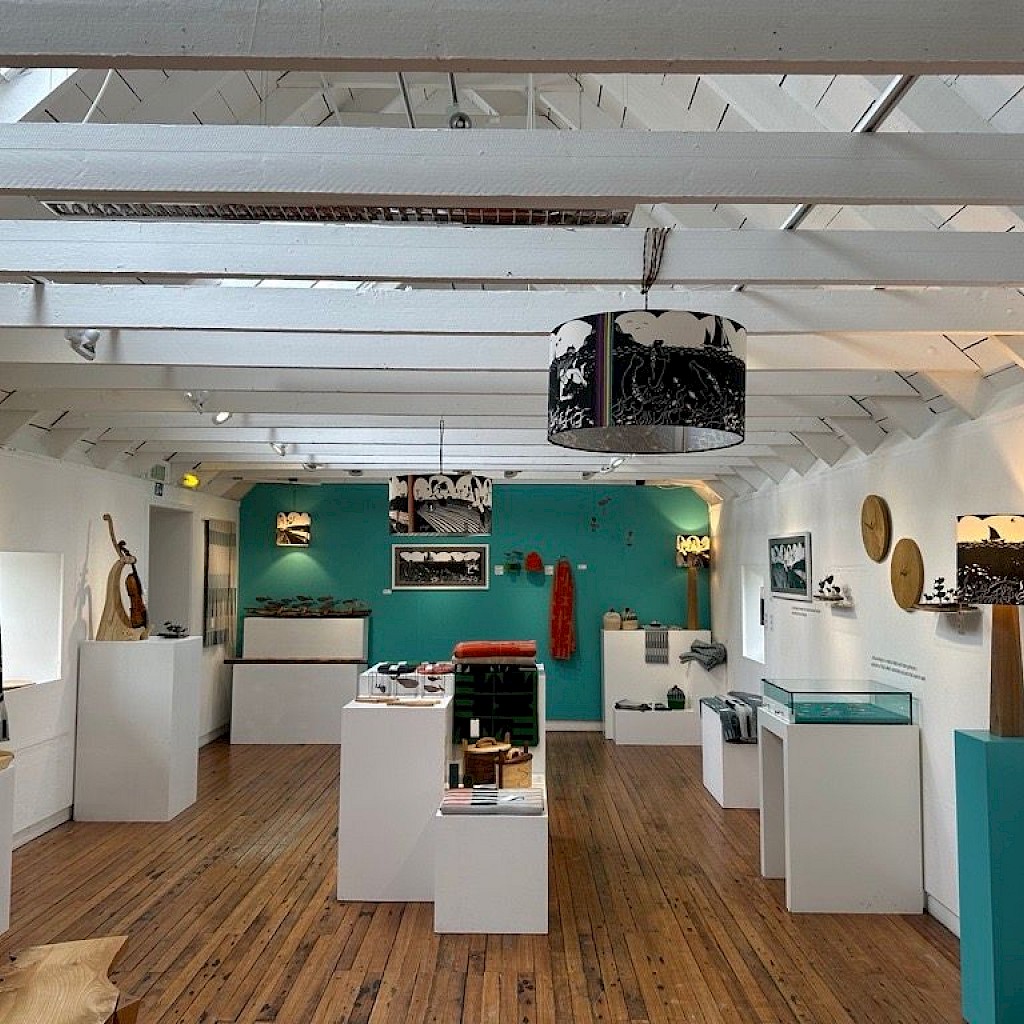What is the name of your company and where do you do your work?
I’m Rosalynn Fraser and my company is called RoLo. The name RoLo comes from my son and daughter’s names, Ross and Louise.
I work from my home in Tingwall. We’ve spoken for ages about getting a dedicated workshop in the garden but because I work part-time, I feel like it would take me away from the family so I quite like just having it in the house, even though it does create a lot of stoor!
What equipment do you use?
I knit and I needle felt. The knitting machine I have is my mam’s, an old hand-framed Fair Isle knitting machine. I took possession of it in 2013; we were visiting in Whalsay and I wanted to give it a try, I set it up and had a go. It has been a bit temperamental but I have persevered and have taught myself to work it. I also have my heavy duty sewing machine and overlocker that I couldn’t do without.
Who or what do you draw inspiration from?
For the first cushions I made I chose a Fair Isle pattern that I loved. I didn’t realise at the time, that the pattern I had chosen was the same pattern that my mam made me and my three sisters jumpers with when I was about 15. My youngest sister, Andrea, pointed this out and I was happily surprised to realise why I had been instantly drawn to that pattern in the first place.
I also knit cushions with sheep, peerie houses and fish on them. I grew up in Whalsay on a croft, and my dad was a fisherman all his life, so my main inspirations comes from that.
Why do you choose to use the materials that you use? Where do you source your materials?
When I learned to knit, I don’t know if I was even at school. My mam was a big knitter and John Tait had a knitwear factory in Whalsay so they would knit up the bodies of the garments and we would knit in the yokes. That’s how we earned our pocket money when we were peerie. We were doing that before we were 10 and I have continued to knit ever since.
I try to use local materials. I normally use Jamiesons & Smith yarns – it is quite dangerous to go into their shop though because I go in looking for a couple of cones of wool and come out with 10! For needle felting, I try to use local wool, but I am often limited with colours, so I do source from south as well.
I really like using wool. It is amazing how a few balls of wool can be knitted into a stunning piece of work. The needle felting never ceases to amaze me how you can take a lump of oo and create something quite solid or create designs onto pieces.
How do you work, what is your process? What's your favourite part of the process?
For my cushions, I tend to knit long strips; I don’t knit a cushion at a time. I will knit up a few and then felt it in my washing machine. I might knit up 10 at a time, either the same colour or different colours. I then hang it on the washing line and once it is dry cut it to the size that I need. Because it has been felted it doesn’t spret (unravel) and the felting process creates a stronger end product.
Then it’s the overlocking and sewing. And a lot of ironing!
Do you have a favourite kind of piece to make?
I like making my cushions, my favourite part is knitting them up on the machine. Eenoo at Bonhoga, there’s a mustard cushion with dark grey houses on them, which is my favourite piece at the moment, but that could change next week. That colour is quite unusual for me because I love blues and teals. My house is mostly decorated blue so I do have to force myself to make different colours because I have to mind that folk like different colours, not just blue.
How long does it tend to take you to complete a piece?
It’s very difficult to say because I don’t do it in a one-off. It’s quite a lengthy process and I’ve always meant to knit one and see how long it takes me. Because I tend to have 10 on the go, I’ll sew all the zips in and then sew up the cushions so I don’t tend to do a one-off piece.
With the needle felted pebbles I’ve been doing, it can easy take up to an hour to make one. It’s not a very quick process.
What does your craft mean to you?
It’s a really big part of me. I have always been creative and love making things. In the past I have made bridesmaid dresses, I made some extra money at university by making ballgowns for friends as well as other things. I find making very therapeutic and I get a lot of satisfaction when folk buy my products. I never intended to start this business, it all happened by accident. I broke my leg in 2010 and was in plaster for 11 weeks, 5 of them I had to have my leg up so I learned to needle felt then, I was also crocheting and knitting. I ended up with a massive pile of pieces so a friend encouraged me to sell it at the farmers market. My business grew from there.
When I got my mam’s machine, I just borrowed it to play around with initially and was never planning on making cushions, but I made two cushions and put a photo on Facebook. I received fantastic comments, asking where I had bought them, were they available in different colours, etc. I was quite surprised by people’s reactions and now I have lost count of how many I’ve sold.
Craft aside, what do you like to do in your spare time?
We have a peerie dog and I like to go walking, although I’ve neglected everything recently getting ready for ShetlandMade which has taken up a lot of my nights and weekends. So I’ve been dreaming cushions as well as making them!
I just like spending time with my family and all the usual things, going to the beach, seeing friends, reading and enjoying Shetland and life in general! I’m not big into holidays at all, I just like puttering about home with Graham, Louise, Ross and our lovely dog, Brooke.
What motivates you to do what you do?
A lot of it is folk’s lovely comments. So many people have been so supportive and helpful, Joanna Hunter of Ninian was the one person that convinced me that my things were good enough to sell and when she offered to take some of my things in to her shop I think that I was in shock for a few days! She really gave me so much advice and gave me the confidence to carry on. Angela Smith from Shetland Arts has also been so supportive, she is always there to offer advice and help out. The whole of the Shetland Arts and Crafts Association have been brilliant, they are always quick to answer any questions and help out where they can. We are very lucky in Shetland to have such supportive organisations and people to encourage and help local producers to continually develop. That is what really motivates me and the super comments customers put on Facebook, that really means a lot.
